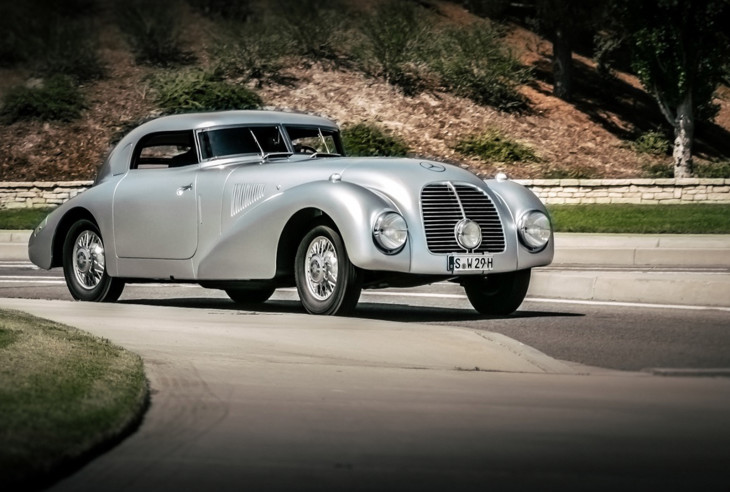First conducted in 1950, the Pebble Beach Concours d’Elegance invites only the most beautiful and rare automobiles to appear each year, drawing connoisseurs of art and technology to see them. Two classic and beautiful aluminum-bodied cars will appear at this year’s premier event, on August 17th.
Mercedez-Benz 540K Streamliner
Mercedes-Benz Classic will also showcase the one-off 540K Streamliner coupe. Dating from 1938, the vehicle features a lightweight aluminium bodyshell developed in the wind tunnel, making it an object lesson in efficiency for its size class. The Streamliner includes a powerful supercharged engine and was built for high-speed, long distance motoring.
Developed in 1937/38 in the special vehicle production unit at the company’s Sindelfingen, Germany, plant, it was originally designed to take part in a long-distance Berlin-Rome race, planned for the autumn of 1938. The race was initially postponed until 1939 and then ultimately cancelled completely due to the outbreak of the Second World War. From mid-1938 onwards, the streamlined model was used by the German branch of tire manufacturer Dunlop for the relentless everyday testing of high-speed tires for fast cars.
Mothballed after the war, 2014 sees it thrust into the limelight once more following a complex and time-consuming full restoration to its original condition. Mercedes-Benz Classic has done so used only the technical skills, methods and materials of the period from which the vehicle originates in the restoration process. The Streamliner thus stands today as it was when first seen in 1938 — a herald of the future, whose stunning aluminum bodyshell makes high driving speeds and exceptional performance seem perfectly credible, even before it moves an inch.
“The 540 K Streamliner represents the embodiment of perfection in its purest form”, says Michael Bock, head of Mercedes-Benz Classic and Customer Center. “The integrity of its overall design as well as numerous technical details do not only epitomize the innovative power of the Mercedes-Benz brand but also its expertise in the development of one-off vehicles to meet the very highest expectations in terms of design, comfort and customer benefit.”
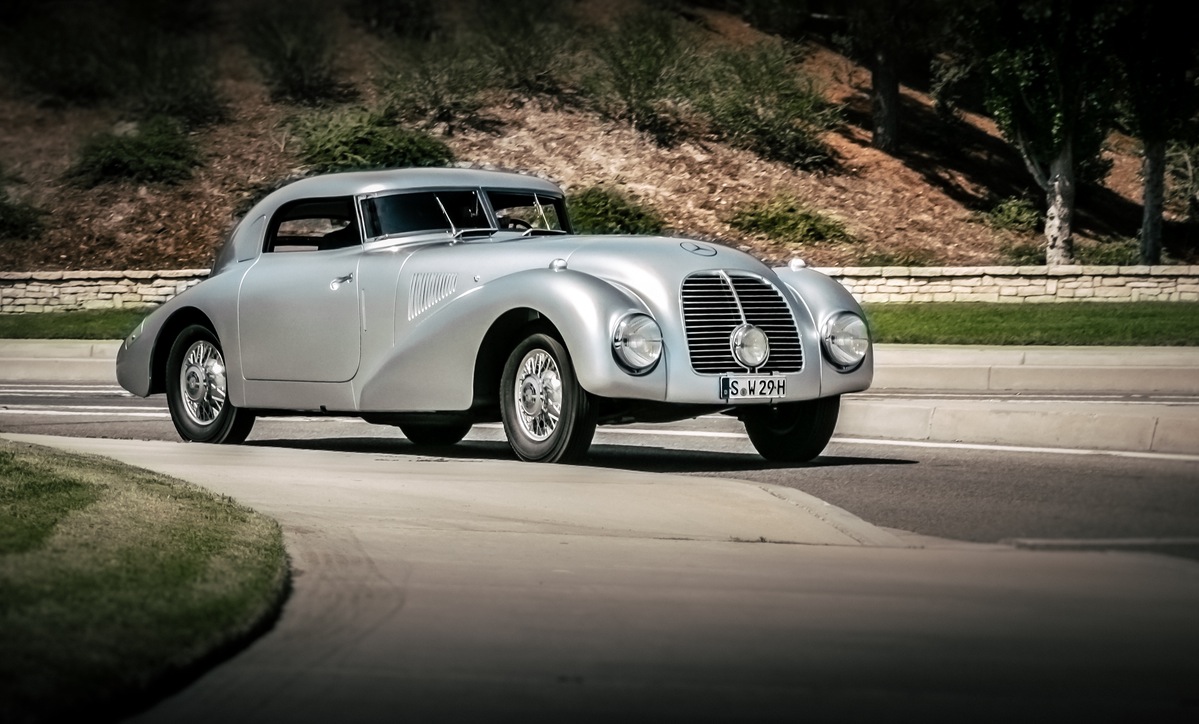
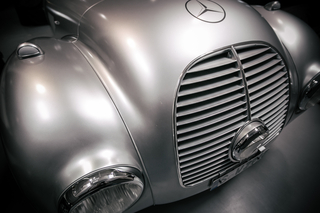
Jaguar Lightweight E-Type
Jaguar has revealed the prototype of its “new” Lightweight E-type, the first of only six to be built and sold. The vehicles are a recreation of the 1964 model and represent the six “missing” vehicles from the “Special GT E-Type Project,” which originally started in February 1963 with the objective of building 18 cars. Only 12 of the aluminum-bodied Lightweight E-types were eventually built and the remaining six designated chassis numbers have lain dormant, until now.
The six new cars will carry those original, historic Lightweight E-type chassis numbers and will be built to a specification originated from the last Lightweight E-type produced in 1964. Each will be hand-crafted at the original home of the E-type, Jaguar’s Browns Lane plant in Coventry, England.
“The E-type is an iconic car, and the Lightweight E-type the most desirable of all. To be able to complete the intended production run of 18, some 50 years after the last Lightweight was completed, was an opportunity we couldn’t miss,” said John Edwards, managing director, Jaguar Land Rover Special Operations.
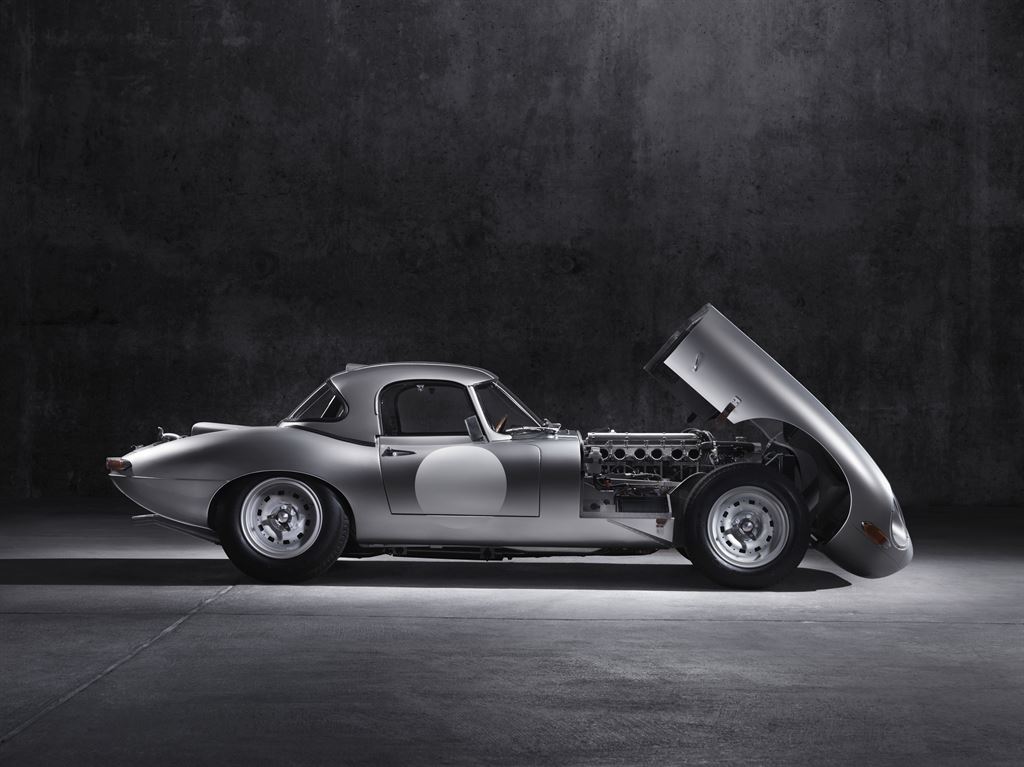
The Bodyshell: The core component of the Lightweight E-type is its aluminum bodyshell. This material replaced the steel version on the production E-type in the quest to shed weight — some 250 lb (114 kg) were saved compared with the standard car.
Despite the 50-year gap, the aluminum build of the six new Lightweights gives them an immediate affinity with the current Jaguar range, the F-TYPE and XJ models being built to exacting standards with aluminum bodies for exactly the same reason. So when tasked with the job of recreating the Lightweight E-type’s aluminum body, today’s Jaguar engineers could relate at once to what their predecessors had achieved 50 years before.
However, despite the enormous advances in technology since the early 1960s, the decision was taken not to incorporate modern materials or fixing methods. While high-strength aluminum alloys and bonded structures would have been invisible, they would not have been true to the original design, nor would they have conformed to the FIA’s homologation requirements for historic racing.
Instead, today’s advanced technology was deployed to ensure the highest quality and most faithful rendition of the Lightweight E-type’s open two-seater body components. Using state-of-the-art scanning technology, the inner and outer surfaces of a Lightweight bodyshell were digitally mapped. The resulting massively detailed scan, which recorded dimensions and shape down to a fraction of a millimetre, was then assessed by Jaguar’s technicians to validate how the body was assembled back in the 1960s, how consistent the structure was side-to-side, and how it could be engineered today to produce the highest quality result for the Lightweight E-type project.
Even panels which are unseen within the structure have been faithfully reproduced. Approximately 75 per cent of the panels are made in-house at Whitley, just a few very large pressings being supplied by external specialists using Jaguar-designed tooling.
The grades of aluminum used for both the under-structure and surface panels are almost identical in mechanical properties to those used for the original 1963 Lightweight E-types. The body is constructed to original Lightweight E-type Chassis no. 12 condition, by which time Jaguar had added some additional strengthening in key areas of the shell. The aluminum body is then completed by the addition of an aluminum bonnet, doors, and trunk lid. As with the original cars, an aluminum hard top is standard, as well as a roll-over cage.
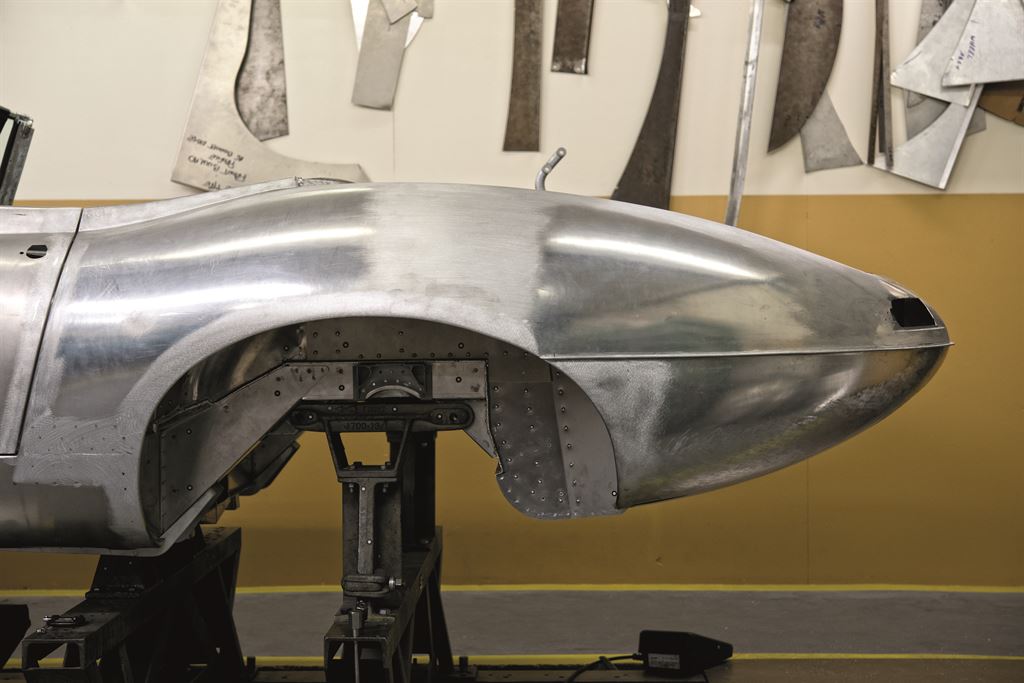
The Engine: The 1963 Lightweight E-type was powered by a highly developed version of Jaguar’s straight-six XK engine, which, with its chain-driven twin overhead camshafts and aluminum head with hemispherical combustion chambers, remained highly advanced in 1963 even though it had first been seen in the XK 120 as far back as 1948. It was this engine that had powered the C- and D-types to five Le Mans victories in the 1950s, and the unit developed for the Lightweight E-type is based on the 3,868 cc (236 cu in) engine, which, in the D-type, had won Le Mans in 1957.
A similar big valve “wide angle” cylinder head was used on the Lightweight E-type, but in place of the D-type’s cast iron block, Jaguar introduced an aluminum block that substantially reduced the amount of weight over the front wheels. This aluminum block engine also features in the present-day car, with pressed-in steel liners.
Whether carburetors or fuel injection is specified, brake horsepower is well over 300. And, with torque in the region of 280 lb ft at 4,500 rpm, the car is endowed with rapid acceleration from comparatively low engine revs — a traditional feature of Jaguar racing engines.
A 12 volt negative earth electrical system is used, and the engine benefits from a modern inertia-type starter motor. The water and oil radiators are in aluminum alloy, there is an aluminum expansion tank for the coolant, and the fuel tank is mesh-filled for safety.

Final Assembly: As befits a thoroughbred GT car, where weight saving in all areas is demanded, interior trim is minimal. Much of Car Zero’s interior — floorpan, sills, rear areas — have intentionally been left unpainted, to emphasise the car’s aluminum bodywork. Leather is used to trim the competition-type aluminum bucket seat base.
Car Zero underwent a 15-day shake-down period at Jaguar Land Rover’s test facility at Gaydon, U.K., to prove out the car’s dynamics and establish optimum suspension settings. Jaguar’s engineers established a design verification plan for the car, just as they would do for an entirely new model. Each of the six new Lightweights will go through shake-down tests to ensure that they meet the required standards in terms of braking, handling and steering.
“With the Lightweight E-type, our focus as a design team has been to ensure justice was done to the original work of Sir William Lyons and Malcolm Sayer. Meticulous attention to detail has been everything to us in re-creating this car, just as it is in our contemporary Jaguars. I believe the result is a new Lightweight E-type that is as stunning now as the originals would have been when they were new,” said Ian Callum, director of Design, Jaguar.

